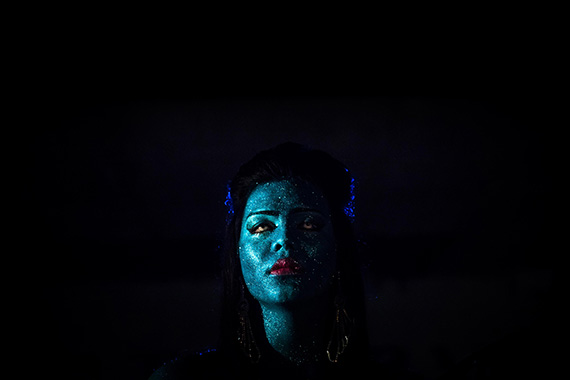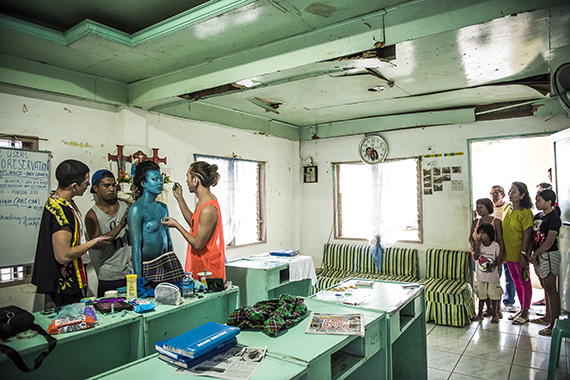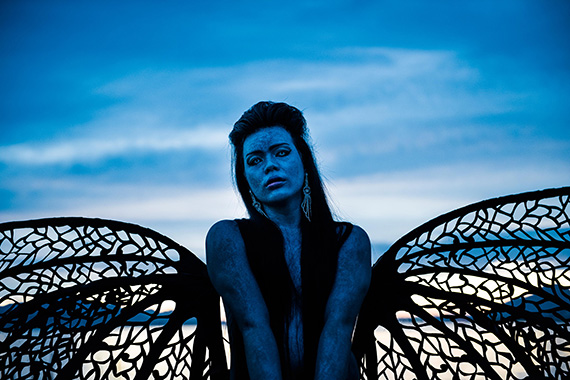
In the past two-and-a-half years, Justin Shoulder and Bhenji Ra have collaborated on performances and video, as well as club-based event production under the moniker of ‘Club Ate’, working with queer people of colour.
Justin Shoulder and Bhenji Ra are collaborators from Sydney, brought together by a shared cultural lineage within Australia’s Filipino diaspora. Shoulder works in performance, sculpture and video in his body-based practice, and Bhenji Ra is a dancer — working across diverse forms, from traditional Filipino and Vogue Femme — and installation artist, who frequently engages with subcultural communities, focusing on their visibility and lived experiences.
In their single-channel video Ex Nilalang 2015, the artists present the first three episodes of an Alamat (legend). The work was developed and filmed in the Philippines with community collaborators and performers. Ex Nilalang has a dual meaning: ‘to create’, and ‘creature’ — the artists ‘share[d] their skills in craft, dance and performance to bring to life innate mythical creatures’. They intend to accumulate these portraits across time to form an expansive ‘ecology’, describing the creatures’ DNA as ‘bred from the intersecting cells of gender, race, class, sexual orientation and spirituality’.1
The first of these portraits features performance collaborator and friend Jai Jai, who is from Tacloban, where the recent typhoon hit. In Balud, her portrait, she is singing a song of resistance. She transforms into a glammananangaal, a girl from the provinces who covers herself in coconut oil in the evening, detaches the top half of her body from the bottom, and grows wings. Some of the mananangaal’s stories are malevolent, but in these portraits the artists seek to transform demonisation into positive resistance and transgression.
The artists observe that Filipino children are warned about the mananagaal, whose story is part of folkloric mythology passed down since colonial times. They are also interested in the influence of pop-cultural mythologies, as portrayed on television shows and in comic books. In the second Ex Nilalang portrait, as a sirena mermaid, Bhenji Ra channels the ‘Super Sireyna’ transgender beauty pageants that have featured on Filipino television since the 1990s. The artist sees the mermaid’s half fish–half human form as a fitting metaphor for the trans/queer experience and related narratives of the ‘ill-fated, queer body, not quite of this world’2
Shoulder’s creature, a jeepney hybrid, is in the realm of ‘future folklore’. His grandfather was a jeepney driver, and alongside this personal history, the artist is also interested in the history of the vehicle itself, a well-known and highly decorated form of public transport in the Philippines, originally made from reconfigured United States’ military vehicles.
For APT8’s opening and closing weekends, as part of the APT8 Live performance program, Justin Shoulder and Bhenji Ra perform Ex Nilalang: Incarnations 2015–16, which involves roving performances that see their creatures inhabiting QAGOMA’s spaces in procession, conveying their stories through gesture and sound. They see the appearance of these ‘spectral apparitions’ in our day-to-day world as akin to the experience of living between different spaces in their own lives.
APT8 Live Sundays is an ongoing program of artist performances and projects. After a vibrant array of live events on the opening weekend, APT8 Live continues to animate QAG and GOMA for the duration of the exhibition on Sunday 13 December 2015, 31 January, 21 February, 20 March and Saturday 9 and Sunday 10 April 2016 . Supported by the Commonwealth through the Department of Foreign Affairs and Trade.
The artists are also presenting a project for APT8 Kids called Club Anak (Club Child), an immersive environment based on the concept of the digital avatar, with templates from which children can create mythological characters with physical strengths and attributes that move beyond the motifs of typical masculine pop culture.
Endnotes
1 Justin Shoulder and Bhenji Ra, artists’ statement, Ex Nilalang 2015.
2 Conversation with the artists, 26 August 2015.
The Asia Pacific Triennial of Contemporary Art (APT)
is the Gallery’s flagship exhibition focused on the work of Asia, the Pacific and Australia.
21 November 2015 – 10 April 2016
Exhibition Founding Sponsor: Queensland Government
Exhibition Principal Sponsor: Audi Australia

